chapters 1-5
1/525
There's no tags or description
Looks like no tags are added yet.
Name | Mastery | Learn | Test | Matching | Spaced |
|---|
No study sessions yet.
526 Terms
Parallel Circuit
Component parts connected as branches of main circuits
More resistors added= amperage increases=overloaded circuit
Series circuits
Electric circuit whose components parts are arranged end to end
US today uses ____
AC at 60Hz- 60 cycles per second
Flow changes direction 120/sec
Temperature
directly related to resistance
Increased atomic motion due too increased temp prevents electrons from flowing freely
Diameter
inversely related to resistance
Solid conductor increases, resistance decreases
Lower #=thicker wire
Length
directly related to resistance
Length of solid conductor increase, resistance decreases
Material conductivity
Conductors: permit flow of e- (metals)
Insulators: inhibits flow of e- (glass,rubber,wood)
Superconductors : permit flow of e- with no resistance at certain temps (aluminum)
semiconductors: permit of e- under certain conditions
Resistance depends on 4 things
Material conductivity
Length
Diameter
Temperature
Electrical circuit
Pathway through which electrons move
Atomic reactor
Nuclear > electrical
Solar converter
Solar > electrical
Generator
Mechanical > electrical
Batteries
Chemical > electrical
Electric current
Electrons move from areas with high e- concentration to low e- concentration
In a metallic conductor…
An electric current in a solid conductor consists of a flow electrons only (copper/silver wire)
In a ionic solution…
Electrodes immersed in some solutions attract opposite charged ions, ions moves towards electrodes
In a vacuum…
Electrons jump gap between oppositely charged electrons (X-ray)
In a gas…
Positive and negative ions drift towards opposite charged electrodes in a gas (neon)
Conditions of electrodynamics
in a vacuum
In a gas
In a ionic solution
In a metallic conductor
Definition of electrodynamics
Electric charges in motion
Movement
Only negative charges move along solid conductors
Concentration
Greatest concentration of charges will gather at sharpest area of curvature
Distribution
Charges reside on external surface of a solid conductor
Repulsion-attraction
electric field surrounds every charged body
Like charges repel
Unlike charges attract
Laws of electrostatics
repulsion-attraction
Distribution
Movement
Inverse square law
Concentration
Induction
Bringing a charged body in close proximity to a neutral object w/o physical contact creates a charge in neutral object
Contact
Physically touching a charged body to a neutral body creates a transfer of charge
Friction
Abrasion of 2 conductive materials creates a transfer of charges between the materials
Electrification
Process of adding or removing electrons
Electrostatics
Electric charges at rest, the study of distribution of charges and behavior of charged particles helps us to understand electricity and electrical components
Unit that potential difference is measured in
Volts (V)
Conventional vs. electron flow
conventional: flow of electrical current form positive to negative terminal of power source
Electron flow: flow from negative to positive terminal of power source
Inverse square law
Describes how the intensity of a physical quantity decreases as the distance of its source increases
1 ampere
6.24 × 10^18 per second
Power loss formula
P= I² R
Power = current ² x resistance
Electrical power formula
P=IV
power= current x potential difference
Ohms Law formula
V=IR
Potential difference = current x resistance
Dry cell batteries create __
DC
AC vs. DC
AC: constantly changes direction
DC: Flows only in one direction
Convert amperes to milliamperes
1A= 100mA
Multiply current value by 1000
Converts volts to kilovolts
1V= 0.001 kV
Divide potential value by 1000
Resistor circuit
Inhibits electron flow

Battery circuit
Provides electrical potential
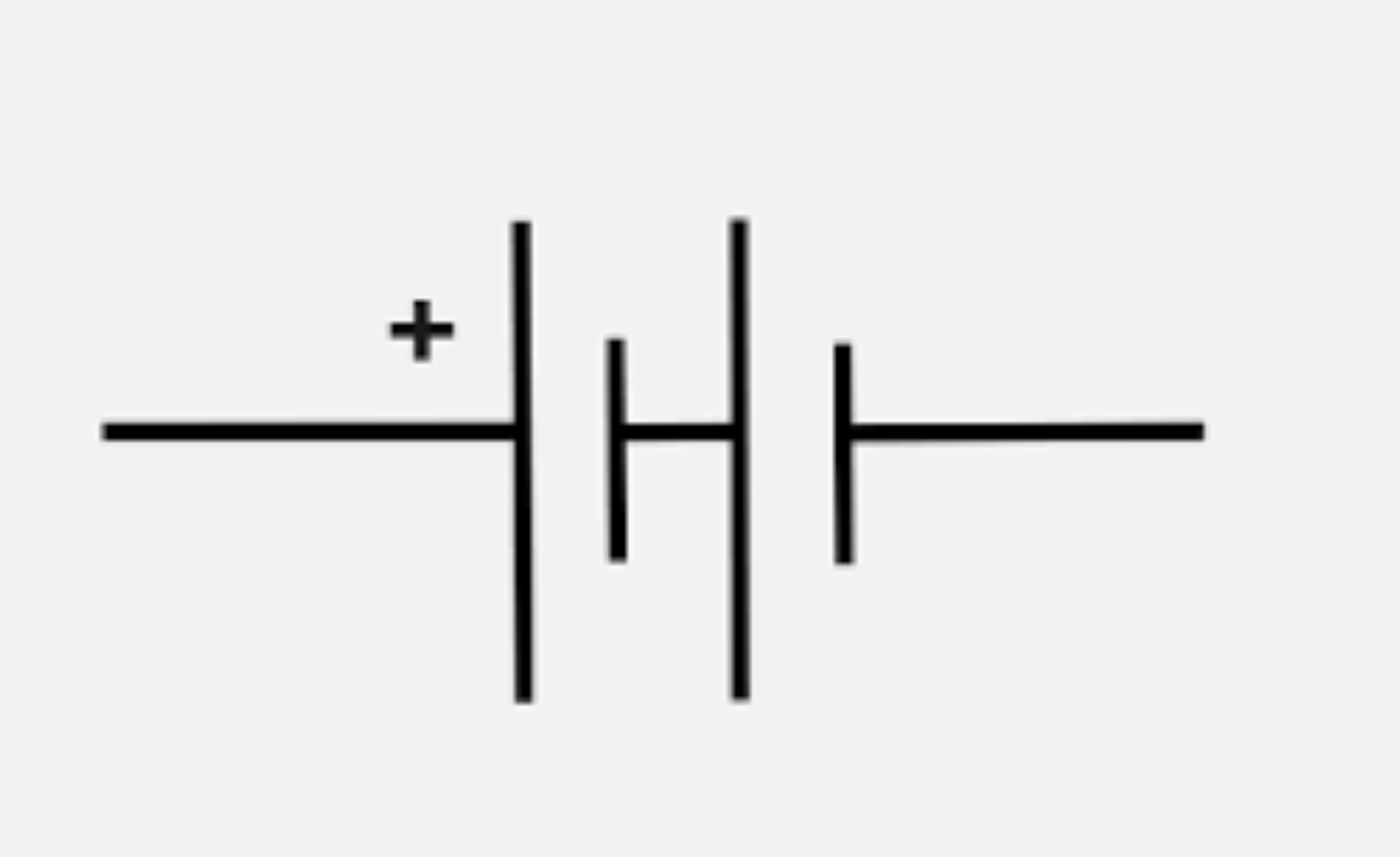
Capacitor circuit
Momentarily stores electric charge

Ammeter circuit
Measures electric current
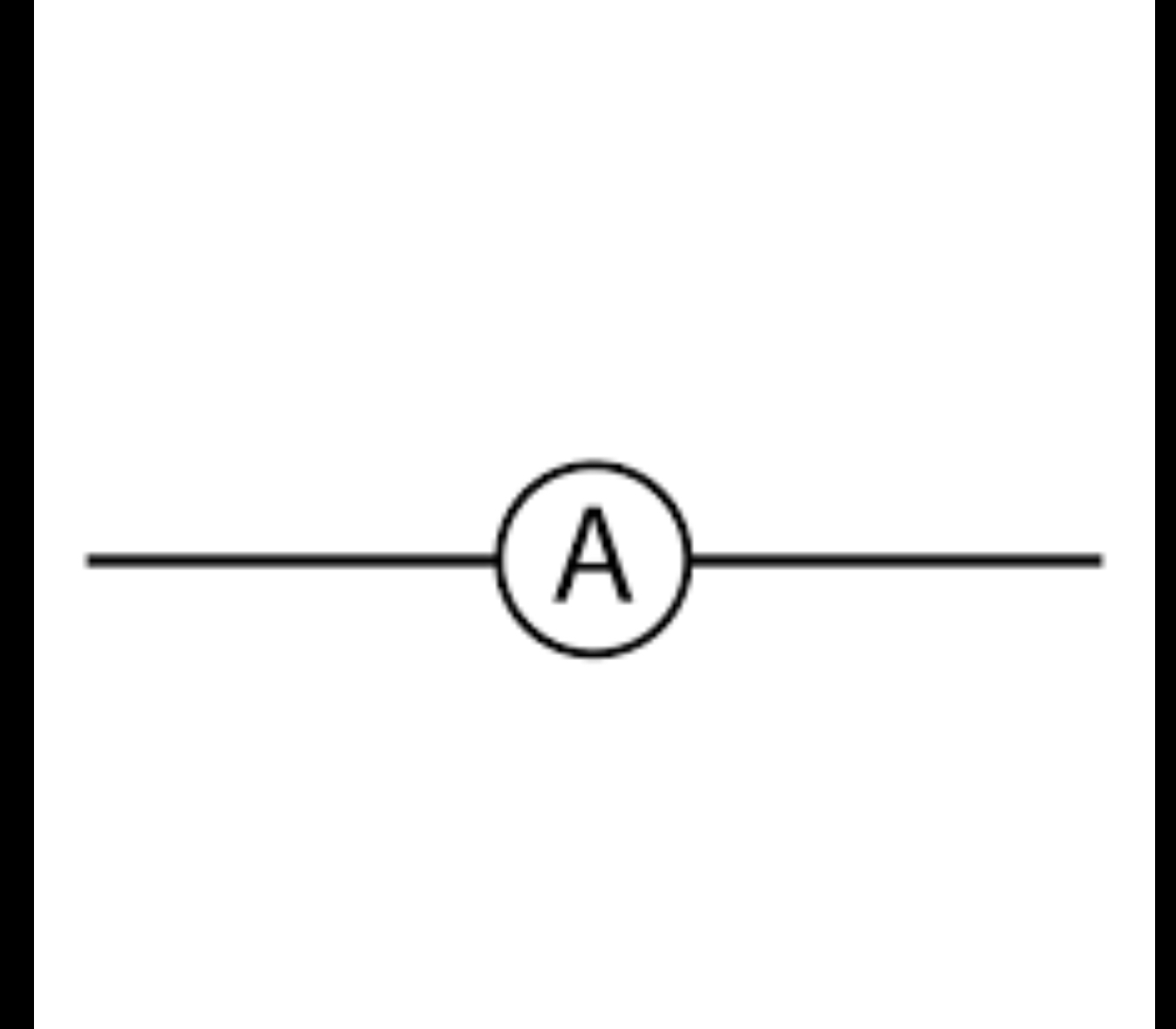
Voltmeter circuit
Measures electric potential
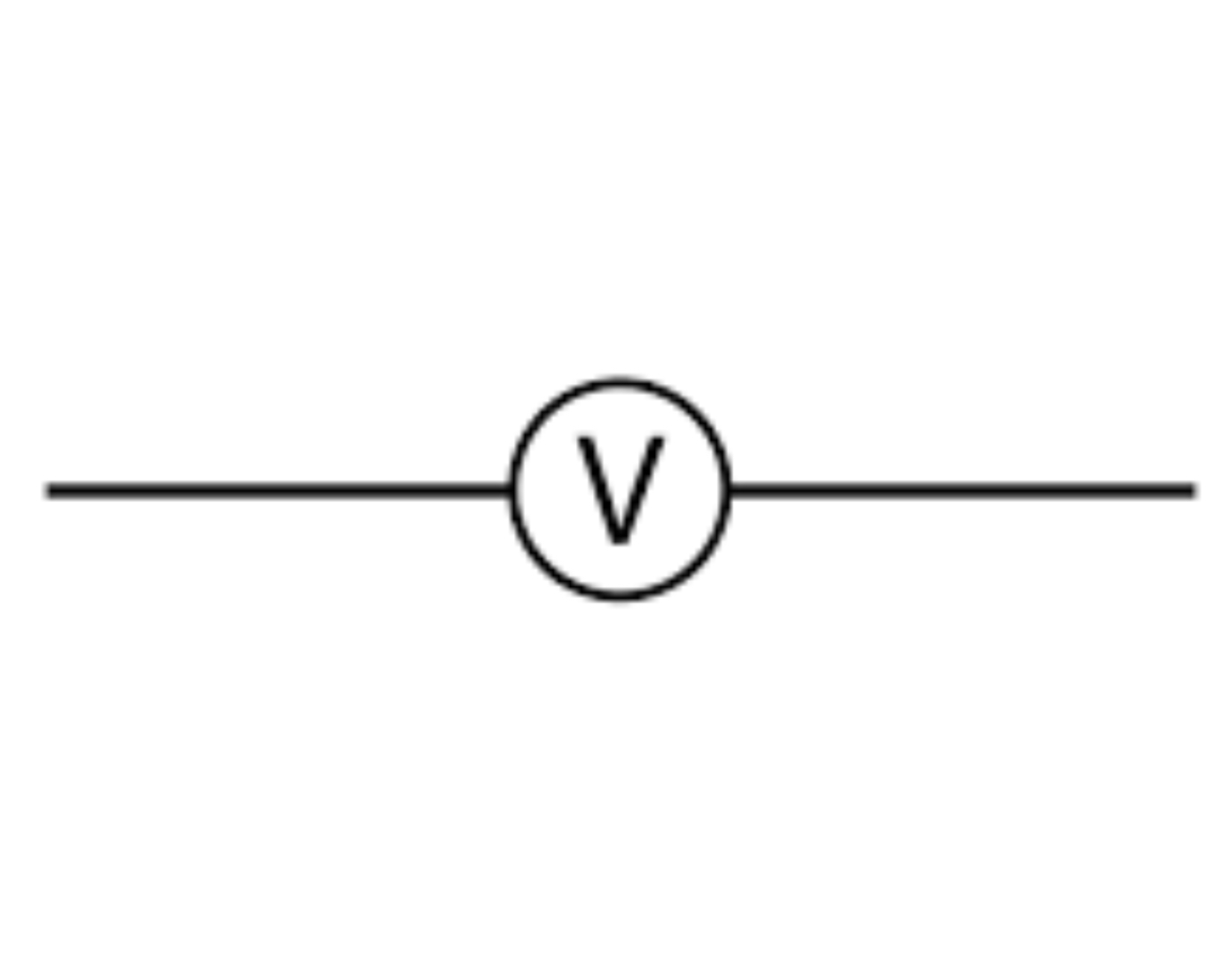
Switch circuit
Turns on/off by infinite resistance
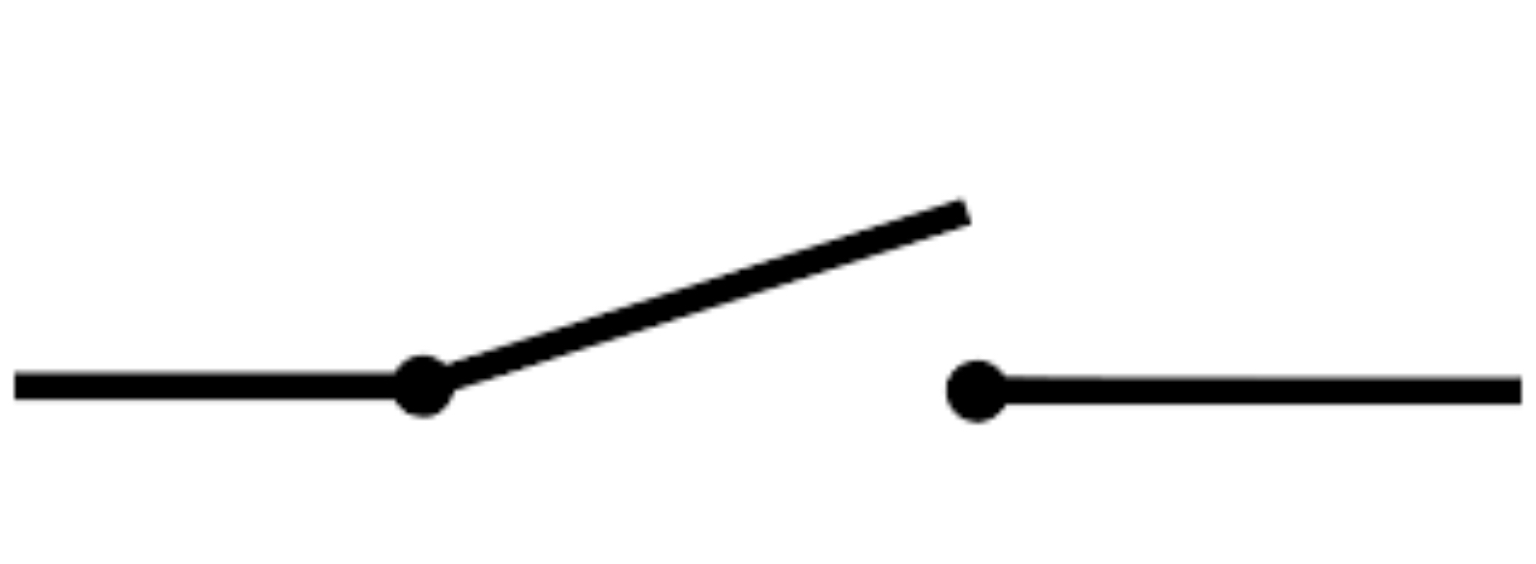
Transformer circuit
Increased or decreased voltage by fixed amount (AC only)

Rheostat circuit
Variable resistor
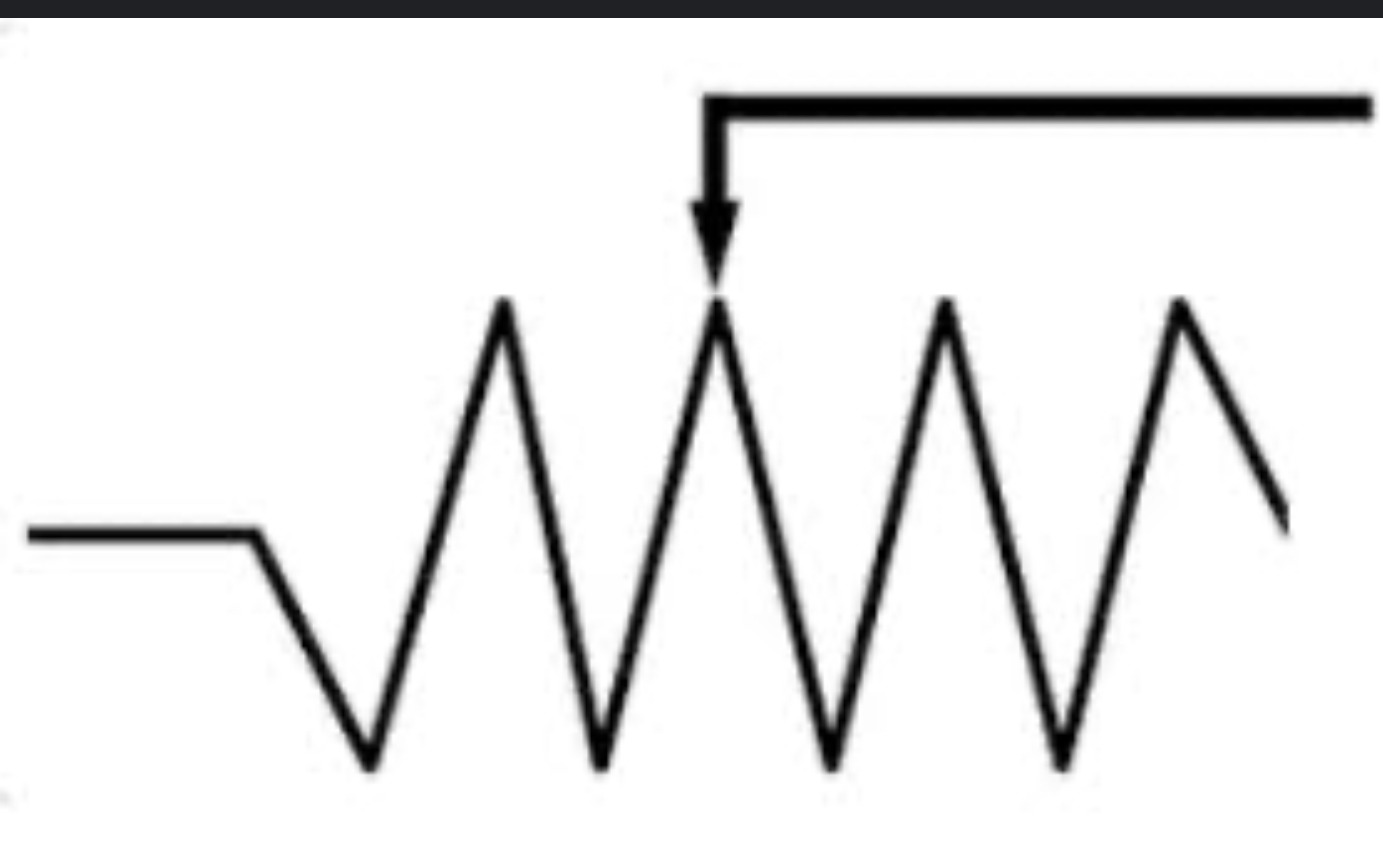
Diode circuit
Electrons flow in only 1 direction
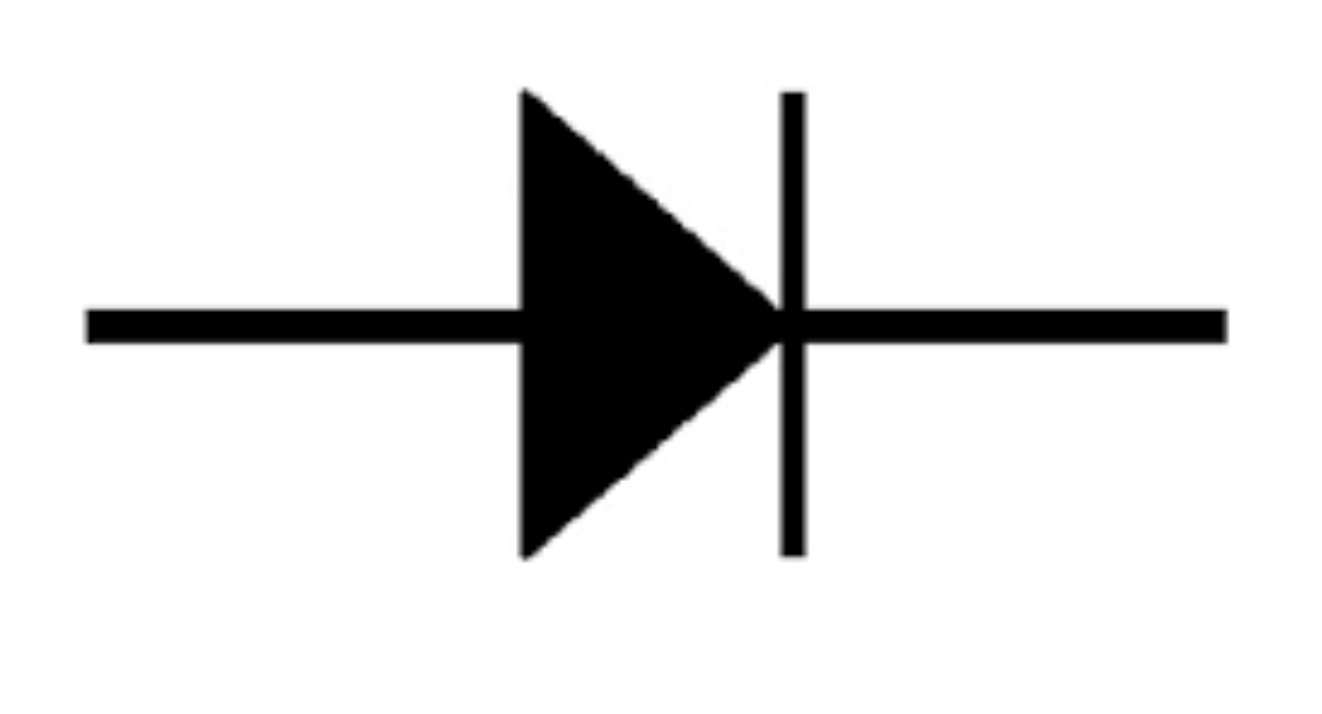
Pulse echo, echo range, and Huygens are the ____ ____
3 Principles of ultrasound image creation
Sound transmitted by ultrasound transducer, into a medium and the sound is reflected back to transducer to create an image
Pulse echo principle
Each echo is placed on the ultrasound image by determining the exact location where the echo came from
Echo range principle
how fast the sound waves is traveling through a medium
How long it takes for the echo to return
finding location of echo
Calculates the length of time it takes for the echo to return
Computer w/ the ultrasound machine
Allows ______ of the _____ between ______ on an ultrasound image
Representation, distance, structures
Ultrasound equipment is _____ for the average _______ of soft tissue
Calibrated, propagation speed
_____ = Short time
Shallow
_____ = long time
Deep
Sound beam is not uniform in shape as it travels (beam width changes)
Huygens principle
Starting point > ______ = transducer diameter
Beam width
½ original value at the transducer/focal zone
Narrowest point
Near field
Transition/focal zone
Focus/focal point
Far field (Fraunhofer zone)
Anatomy of a soundbeam
The ___ ___ is the Region from transducer to focal zone
Near field
Useful beam is equal to about ___ near field lengths
2
Transducer size and operating frequency
Near field is determined by:
The _____ is the Region around focus where the beam is relatively narrow
Transition/focal zone
the ____ is the point of maximum intensity of the sound beam
Transition/focal zone
Reflection arising from the ____ ___ are MORE ____ then those from other depths
Focal zone, accurate
CAN be changed by sonographer
Transition/focal zone
½ of _____ is located in near field, ½ of _____ is located in far field
Focal zone
Location where the beam is narrowest
Focus (focal point)
The width of the sound beam at the focus is ½ the width of the beam as it leaves transducer
disc shaped crystals…
Region starts at the focus and extends deeper
Far field
The area beyond the far field is of no value in forming an image as the b3am becomes too weak
Far field (Fraunhofer zone)
Never stops, endless cycle
Continuous waves
Continuous waves have __ crystals
2
1 emits the pulse
1 listens for returning echo
2 crystals of continuous waves
Continuous and pulsed waves
2 types of sound waves utilized by ultrasounds
Sound waves never stop being emitted by ______
Transducer
Continuous waves emits more _____ then pulsed wave ultrasounds
Power
_____ and _____ remain constant
Amplitude and frequency
Continuous waves are ____
Used in physical therapy
Heat produced helps with ___
Tissue healing
Short burst of acoustic energy that are used to create an atomic images
Has a beginning and a end
Pulsed wave
Pulsed waves are used by ____
Diagnostic ultrasound machines
Pulsed waves have _ crystal
1
Single crystal switches between emitting a pulse and listening for returning echo
Pulsed wave crystal
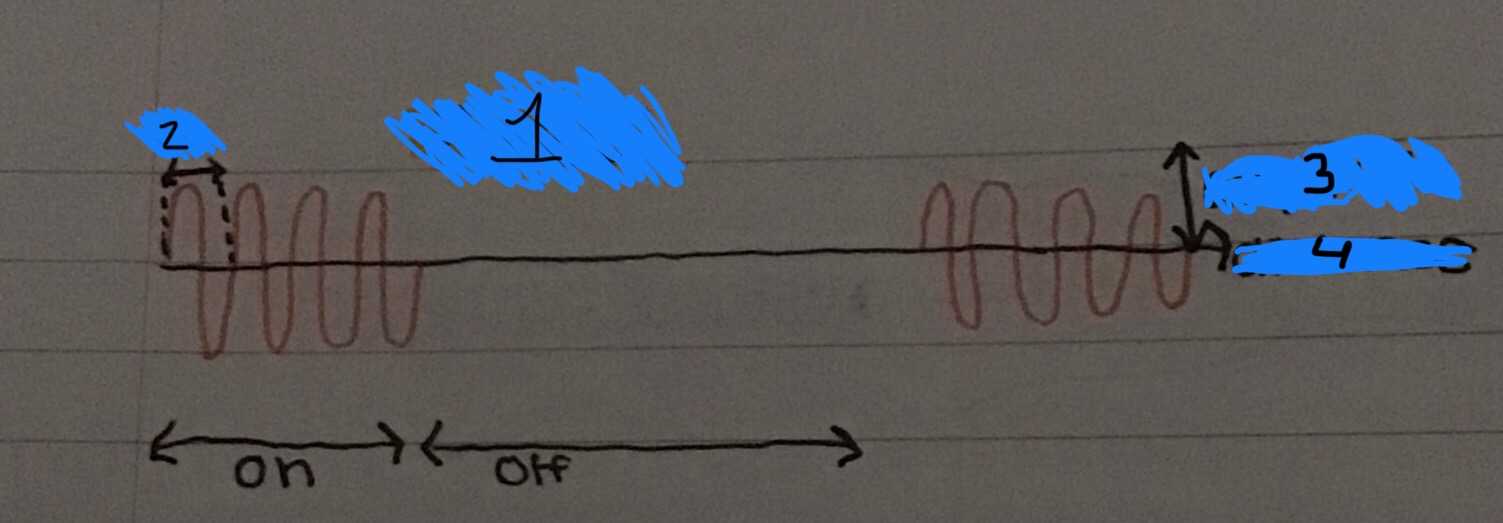
1
Pulsed wave example
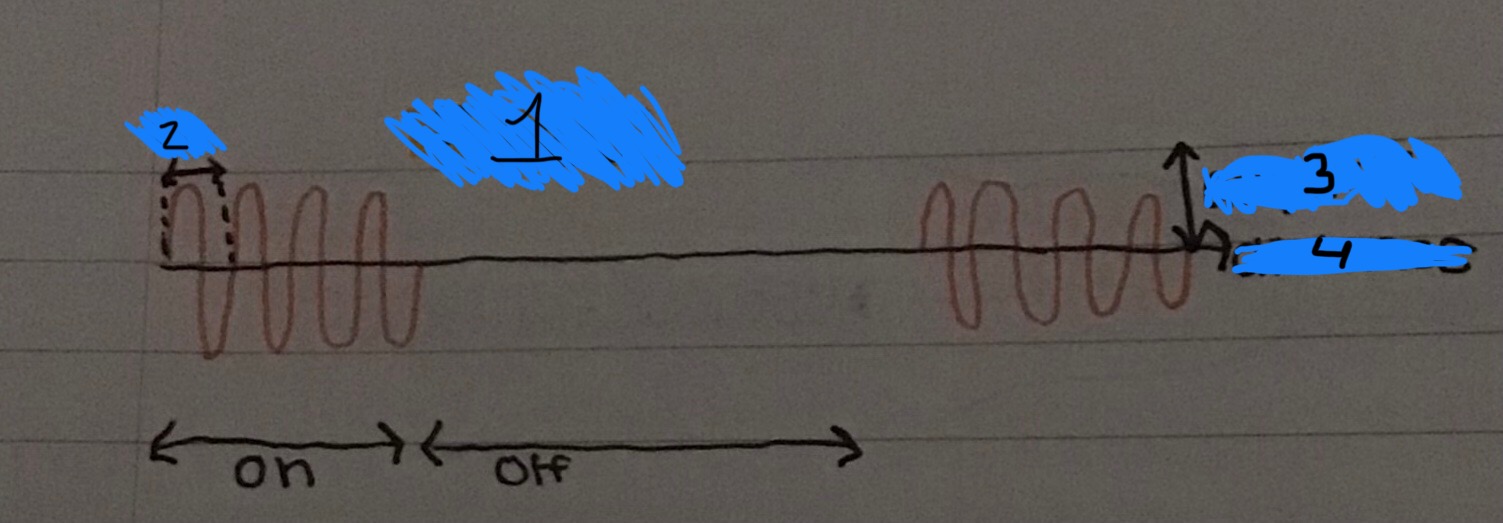
2
Wavelength
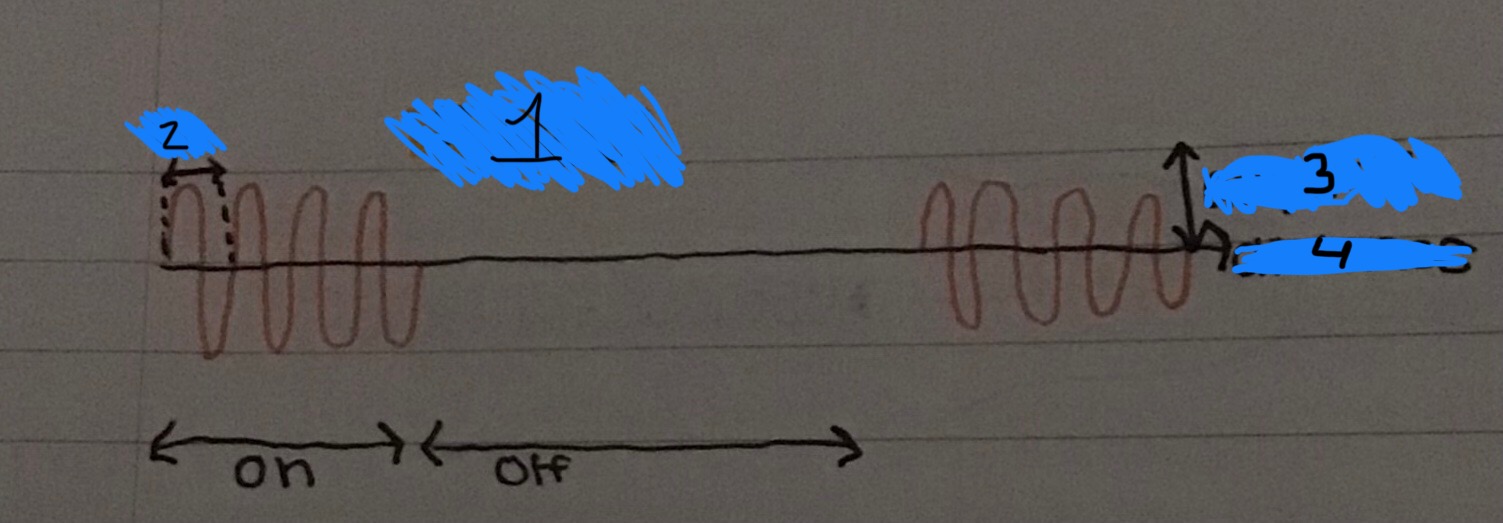
3
Amplitude
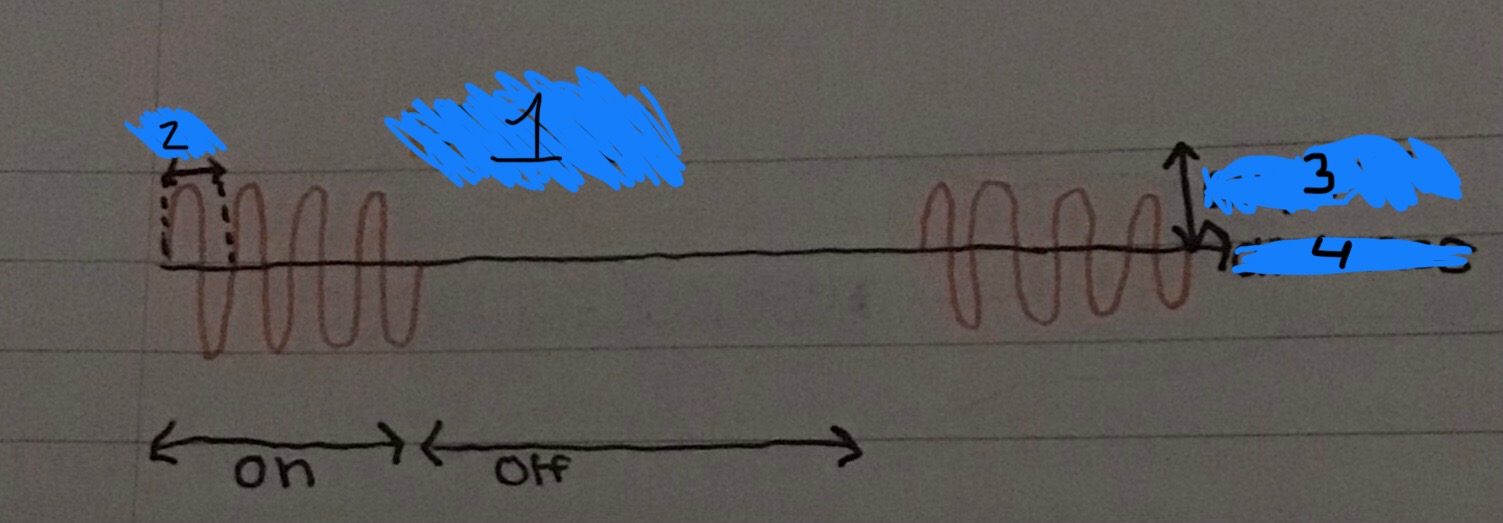
4
Distance

1
Continuous wave example
pressure
Density
particle vibration
Temperature
Variables of sound waves
particles in the medium as a sound wave passes through
Affects of sound wave variables
____ = force/area
Pressure
Concentration of force over a given area
Pressure definition
Pressure is an ____ ___
Outside force
Particles forced together and pressure increases
During compression…
Pressure decreases and particles resume their normal positron and density
During rarefraction…